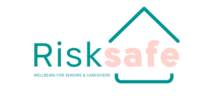Module 2 presents how home risk assessment, prevention and management can contribute to the improvement of the quality of life of the senior citizen and informal caregiver.
It deepens the aspects of social inclusions and communication as win-win strategies to overcome risky situations and create a trusting relationship enabling the acceptance of the adoption of a methodology of risk prevention and management and adoption of an age friendly environment.
Duration: 5 hours – read and exercise
Sessions: 6 topics
M2 – Session 1
The perception of risk among seniors and informal caregivers refers to their subjective understanding and assessment of potential hazards that may impact their well-being, health or safety, especially at home.This perception is shaped by personal experiences, health condition, knowledge, emotions and external influences, such as social norms, healthcare advice and also the presence – or not – of a local / personal network.
Lessons
M2 – S.1.2 – Seniors’ perspective M2 – S1.3 – Informal Caregivers’ perspective M2 – S1.4 – Recognizing risks and their differences M2 – S1.5 – Reflect and actM2 – Session 2
Social isolation affects both seniors and informal caregivers, leading to emotional distress and increased vulnerability.Understanding the different dimensions of social isolation is crucial for identifying effective strategies to mitigate its impact.This session provides a comprehensive overview helping participants recognize and categorize key risks.
Lessons
M2 – S2.1 – Introduction M2 – S2.2 – What is social isolation of seniors M2 – S2.3 – What is social isolation of informal caregivers M2 – S2.4 – Exploring the dimensions of social isolation M2 – S2.5 – Reflect and actM2 – Session 3
Social isolation is one of the main risks perceived by both the seniors and informal caregivers, with serious implications for their quality of life and mental health.This session explores causes and consequences of isolation and proposes strategies to mitigate it.
Lessons
M2 – S3.1 – Introduction M2 – S3.2 – Strategies M2 – S3.3 – Reflect and actM2 – Session 4
Effective communication between an informal caregiver and a senior involves the clear, compassionate and respectful exchange of information to ensure the well-being and safety of the senior.It includes verbal and non-verbal communication, active listening and an understanding of the elderly individual’s physical and cognitive abilities.
Lessons
M2 – S4.1 – Introduction M2 – S4.2 – Communication and relationship M2 – S4.3 – Reflect and actM2 – Session 5
Communication must be targeted according to the person in front of you and his/her specific needs in order to avoid relational stress or misunderstanding.Communicating with a seniors is therefore very different from communicating with a young colleague, an adult or a child.The category of senior, together with children and disabled people, deserves a closer examination of the case, as it is a risk category with which to better target communication strategies.
Lessons
M2 – S5.1 – Introduction M2 – S5.2 – Elderly person in the communication relationship M2 – S5.3 – From the active listening to an “healthy communication” M2 – S5.4 – Reflect and actM2 – Session 6
To guarantee a real improvement of quality of life for both seniors and caregivers, it’s important to implement preventive strategies and supportive practices that respect the dignity and independence of older adults while ensuring a safe home environment.A specific focus is on preventing falls, promoting healthy routines and ensuring independence and comfort for aging adults.

